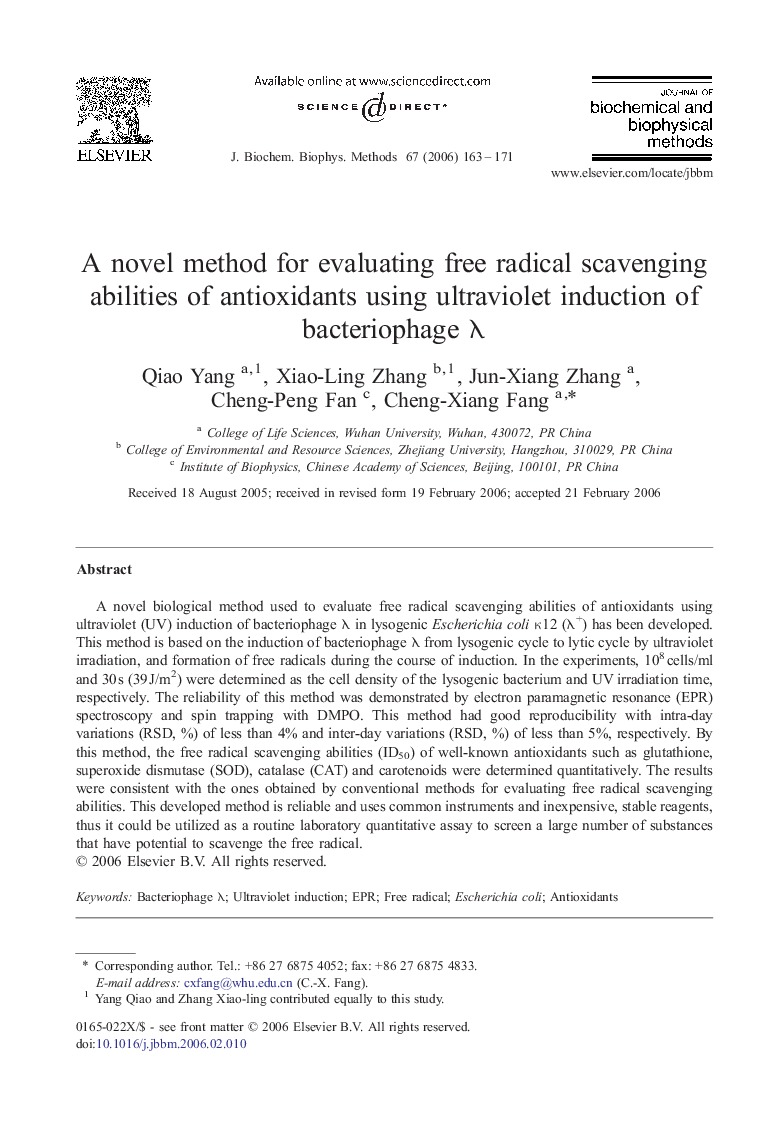| Article ID | Journal | Published Year | Pages | File Type |
|---|---|---|---|---|
| 1988617 | Journal of Biochemical and Biophysical Methods | 2006 | 9 Pages |
A novel biological method used to evaluate free radical scavenging abilities of antioxidants using ultraviolet (UV) induction of bacteriophage λ in lysogenic Escherichia coli κ12 (λ+) has been developed. This method is based on the induction of bacteriophage λ from lysogenic cycle to lytic cycle by ultraviolet irradiation, and formation of free radicals during the course of induction. In the experiments, 108 cells/ml and 30 s (39 J/m2) were determined as the cell density of the lysogenic bacterium and UV irradiation time, respectively. The reliability of this method was demonstrated by electron paramagnetic resonance (EPR) spectroscopy and spin trapping with DMPO. This method had good reproducibility with intra-day variations (RSD, %) of less than 4% and inter-day variations (RSD, %) of less than 5%, respectively. By this method, the free radical scavenging abilities (ID50) of well-known antioxidants such as glutathione, superoxide dismutase (SOD), catalase (CAT) and carotenoids were determined quantitatively. The results were consistent with the ones obtained by conventional methods for evaluating free radical scavenging abilities. This developed method is reliable and uses common instruments and inexpensive, stable reagents, thus it could be utilized as a routine laboratory quantitative assay to screen a large number of substances that have potential to scavenge the free radical.
